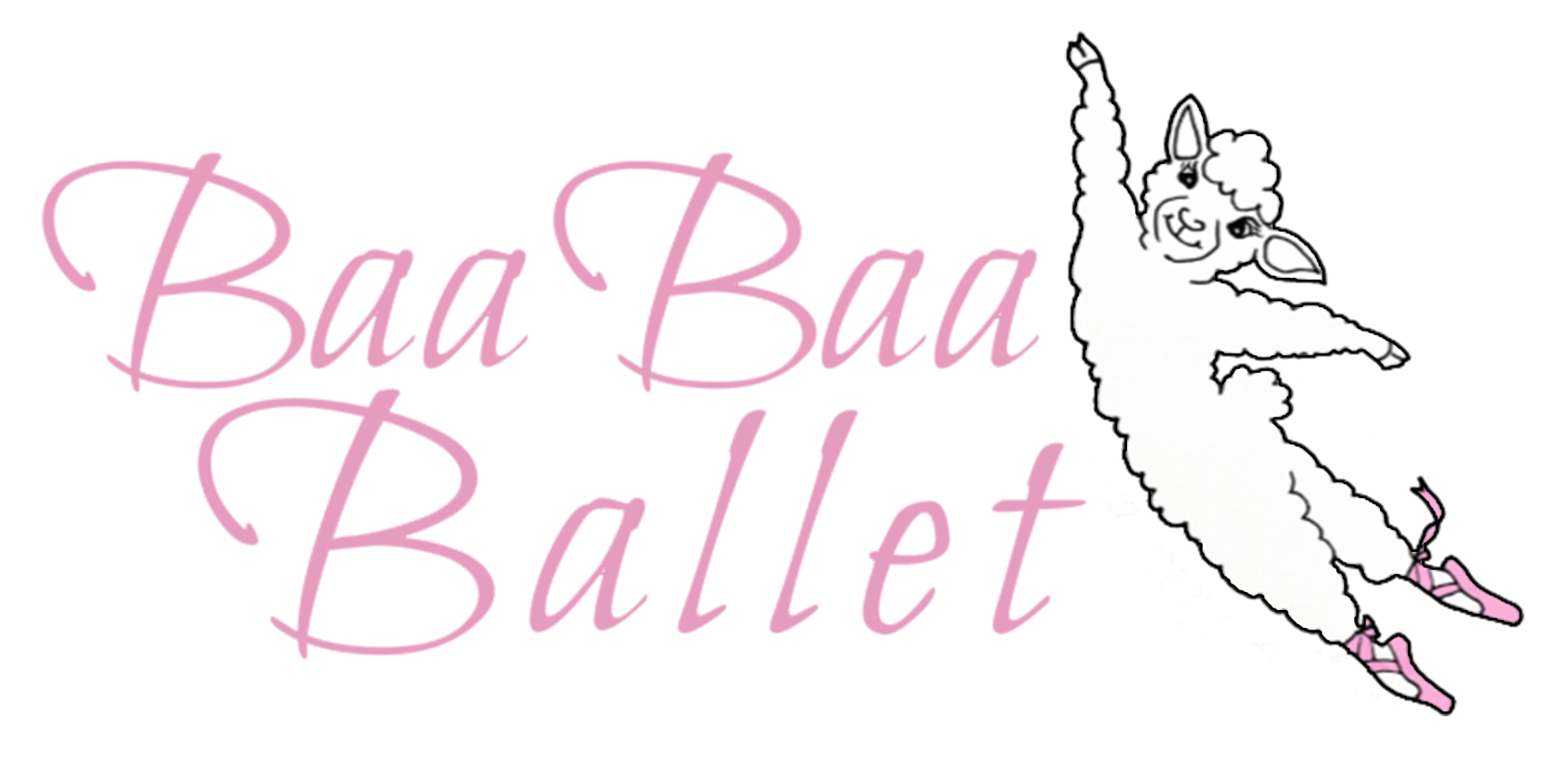
Pointes and Perspective #5 Props to You!
Heather Jean Wilson, Founder Baa Baa Ballet
Let's get right into today's discussion,
“Props to You!”
The Benefits of Using Props
Where I will share some of the many Benefits of using props in your Preschool Classes and thus, the reason Baa Baa Ballet is full of them!
~
We often marvel at children’s imaginations and their ability to make amazing stories and scenarios out of only a few random objects - most often, the cardboard box! This symbolic play is more than just a fun activity for young children. It is a method of learning!
Children are able to play with just about any object, and it is even more stimulating when they have the proper props to help them create their themes.
The use of props during ballet and dance courses can provide benefits for both students - and teachers!
~
For starters, the inclusion of props in a Preschool Dance class helps structure your class. You may start with a warm up, then transition to axial movements utilizing a particular set of props, then move on to locomotor movements making use of another assortment of props, and finally conclude with your themed lesson involving yet another prop.
~
Secondly, props can benefit and enhance a classroom activity that has been done many times before, by adding a visual aid. Like we discussed in Pointes and Perspective Episode #2 “Reinventing the Wheel”, and then Episode #3 “Be the Broken Record”, it is important to repeat exercises over and over, however, we can make those same old exercises new and exciting, by changing up different elements - like props!
~
Next, props spark imagination and boost creativity. Props can help your preschool dancers unlock their inner artist and originality. Props help them become any character in any place, at any time!
~
Props are also great for bringing awareness to students' bodies and space. They offer them opportunities to develop spatial awareness, by using what are known as Setting Props. These props are objects that create a sense of space. Students may start or end at a prop, or work around a prop. Props can divide a space, or provide a reference point.
The props teach directional tracking as students visually track their props movement.
Motor skills can be strengthened using Handling Props, which are props that students pick up and use. When children grab objects and hold them, they are practicing fine motor movements and improving eye-hand coordination. This practice leads to using the objects for their intended purpose, like eating with a spoon or fishing with a fishing pole, strengthening flexibility, balance, and physical fitness.
~
Additionally, props help students see how music relates to movement. Musical instrument props are great for finding the beat, listening and repeating rhythm, and practicing play and rest patterns, which can then be transferred to move and stillness patterns.
Props can help in teaching the concept of quality of movement by making the prop move from slow to fast or from smooth to sharp.
~
Next, props can help sharpen students' listening skills, focus, and memory. As we move our props based on musical or verbal cues, with limited distractions and minimal conversation, your students will be more focused on what you have to teach.
Memory is boosted by learning, memorizing, and recalling the props' different patterns and moves.
~
Props even help students gain confidence, and connect and interact with their peers. Costume Props, which are props that can be worn, make children feel their part is important. Uniforms and wearable items that symbolize roles, represent that the child has a job to do, that their character is real, and people will take them seriously.
Props create opportunities for sharing, taking turns, listening, communicating, building trust and the importance of teamwork. Props can even encourage opportunities for expression, for children who aren’t yet able to put their thoughts into words.
~
So, just as books, paper, and crayons are essential for academic learning, props are indispensable in a preschool dance program. Dancers can prove that anything is possible, with a little imagination, and the right props.
So… Props to You!
“Props to You!”
The Benefits of Using Props
Where I will share some of the many Benefits of using props in your Preschool Classes and thus, the reason Baa Baa Ballet is full of them!
~
We often marvel at children’s imaginations and their ability to make amazing stories and scenarios out of only a few random objects - most often, the cardboard box! This symbolic play is more than just a fun activity for young children. It is a method of learning!
Children are able to play with just about any object, and it is even more stimulating when they have the proper props to help them create their themes.
The use of props during ballet and dance courses can provide benefits for both students - and teachers!
~
For starters, the inclusion of props in a Preschool Dance class helps structure your class. You may start with a warm up, then transition to axial movements utilizing a particular set of props, then move on to locomotor movements making use of another assortment of props, and finally conclude with your themed lesson involving yet another prop.
~
Secondly, props can benefit and enhance a classroom activity that has been done many times before, by adding a visual aid. Like we discussed in Pointes and Perspective Episode #2 “Reinventing the Wheel”, and then Episode #3 “Be the Broken Record”, it is important to repeat exercises over and over, however, we can make those same old exercises new and exciting, by changing up different elements - like props!
~
Next, props spark imagination and boost creativity. Props can help your preschool dancers unlock their inner artist and originality. Props help them become any character in any place, at any time!
~
Props are also great for bringing awareness to students' bodies and space. They offer them opportunities to develop spatial awareness, by using what are known as Setting Props. These props are objects that create a sense of space. Students may start or end at a prop, or work around a prop. Props can divide a space, or provide a reference point.
The props teach directional tracking as students visually track their props movement.
Motor skills can be strengthened using Handling Props, which are props that students pick up and use. When children grab objects and hold them, they are practicing fine motor movements and improving eye-hand coordination. This practice leads to using the objects for their intended purpose, like eating with a spoon or fishing with a fishing pole, strengthening flexibility, balance, and physical fitness.
~
Additionally, props help students see how music relates to movement. Musical instrument props are great for finding the beat, listening and repeating rhythm, and practicing play and rest patterns, which can then be transferred to move and stillness patterns.
Props can help in teaching the concept of quality of movement by making the prop move from slow to fast or from smooth to sharp.
~
Next, props can help sharpen students' listening skills, focus, and memory. As we move our props based on musical or verbal cues, with limited distractions and minimal conversation, your students will be more focused on what you have to teach.
Memory is boosted by learning, memorizing, and recalling the props' different patterns and moves.
~
Props even help students gain confidence, and connect and interact with their peers. Costume Props, which are props that can be worn, make children feel their part is important. Uniforms and wearable items that symbolize roles, represent that the child has a job to do, that their character is real, and people will take them seriously.
Props create opportunities for sharing, taking turns, listening, communicating, building trust and the importance of teamwork. Props can even encourage opportunities for expression, for children who aren’t yet able to put their thoughts into words.
~
So, just as books, paper, and crayons are essential for academic learning, props are indispensable in a preschool dance program. Dancers can prove that anything is possible, with a little imagination, and the right props.
So… Props to You!

